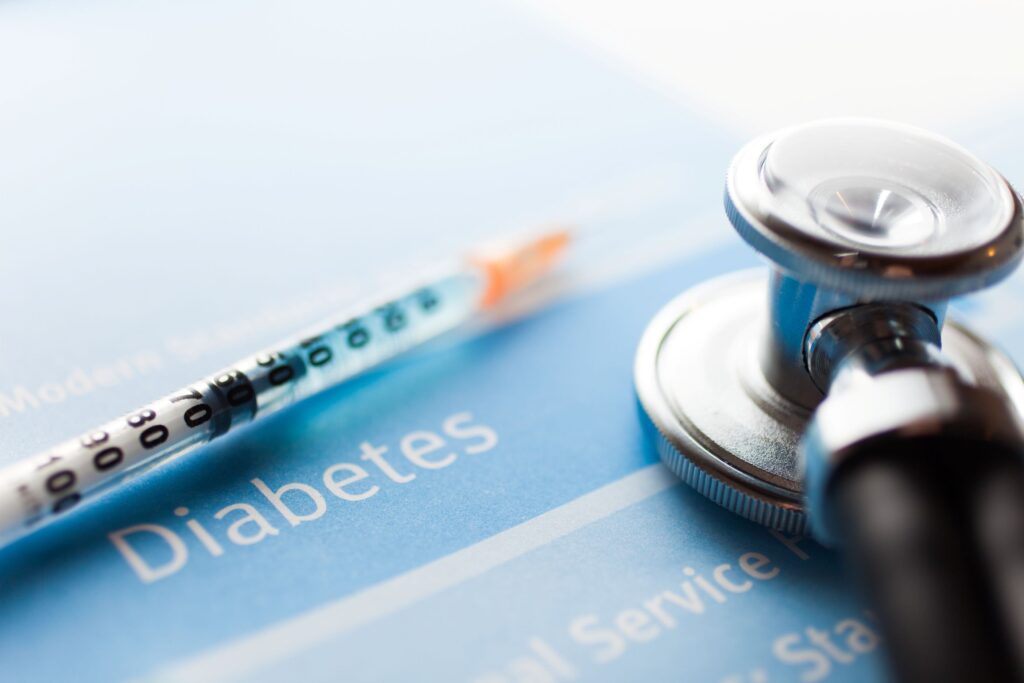
Did you know that an estimated 38.4 million Americans had diabetes in 2021? This chronic medical condition can impact your well-being in many ways, and your mouth is no exception. In fact, according to the CDC, about 58% of adults with diabetes in the United States also have gum disease– yikes!
Unfortunately, periodontal problems are also the #1 leading cause of tooth loss in adults. Therefore, diabetic patients may need to take extra precautions to keep their smiles happy and healthy. Continue reading to learn more about the relationship between diabetes and gum disease and how to protect and preserve your grin!
How Are Gum Disease and Diabetes Connected?
Diabetes is a chronic condition that occurs when your body doesn’t produce or use insulin properly, which results in high glucose (blood sugar) levels. This attracts unhealthy bacteria in your mouth that thrive on sugar and contribute to tooth decay and gum disease. If these germs penetrate your connective tissue, they can cause an infection that worsens until it’s addressed.
Also, increased glucose levels in saliva can lead to dry mouth, further encouraging unwanted microbes to proliferate. Your spit has a nearly neutral pH balance to counteract acid damage and rinses away food and debris that cause dental issues. Without enough moisture, it’s harder for your body to fight gum disease-inducing germs.
How Do I Know If I Have Gum Disease?
Treating your gum disease can help manage your diabetes, and vice versa, but first you have to be able to recognize the signs. The earliest stage, gingivitis, is notoriously difficult to spot because it doesn’t always exhibit visible symptoms until it progresses.
You might have periodontal disease if you notice:
- Red, swollen, or sore gums. If your connective tissues should be light pink; if they’re red or purple, you may have an issue.
- Bleeding when you brush or floss. People with diabetes often have sensitive gums that bleed during their at-home dental hygiene routine.
- Receding gums. If gingivitis progresses, your tissues can start to pull away from your enamel to avoid the illness.
How Can I Prevent Gum Disease with Diabetes?
Thankfully, there are a few things you can do to help preserve your oral condition, including:
- Cleanse your mouth regularly. Consistently removing plaque and bacteria by brushing for a full two minutes and flossing twice daily is essential to precluding dental problems.
- Don’t forget your tongue. Gently scrub your tongue when brushing, too, to eradicate germs.
- Avoid acidic foods and drinks. Steer clear of energy drinks, alcohol, sugary sodas, and other options that can erode your enamel or attract unhealthy bacteria.
- Quit smoking. Cigarettes, vapes, and chewing tobacco all contain nicotine, which restricts your blood flow, so it’s harder for your mouth to fight disease.
- Visit your dentist regularly. Scheduling a checkup and cleaning every 6 months allows your provider to monitor your condition and address areas of concern before they can evolve.
If you have diabetes and are unsure whether you have developed a periodontal problem, the best way to find out is to schedule an appointment with your dentist!
About the Author
Dr. Jay Lopez has 27+ years of experience helping people improve their daily quality of life by enhancing their oral health. He earned his Doctor of Dental Surgery from the University of Colorado Health Science Center School of Dentistry and has continued his education to focus on topics like dental implants, oral surgery, aesthetic treatments, and more. Today, he offers a wide array of services to conveniently meet all your dental care needs under one roof using state-of-the-art technology and techniques. If you’re concerned about gum disease, you can request an appointment on the website or call (520) 886-8090.
